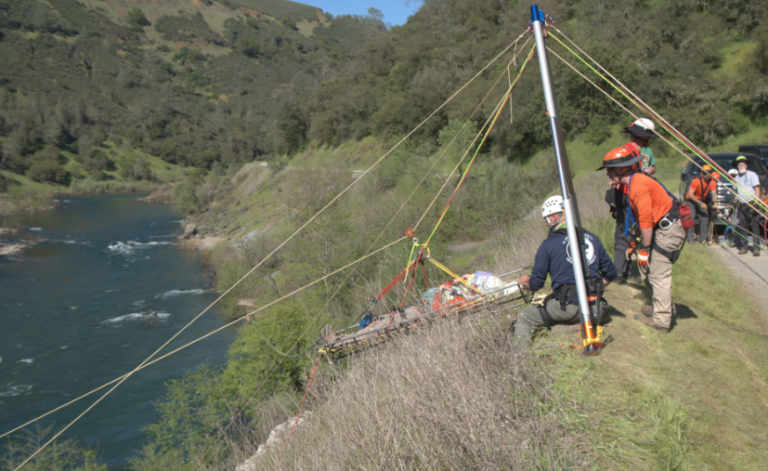It doesn’t matter!… Always answer the first question first. Then move to the second… and then, move to the third.
- What is the purpose?
- Why is it important?
- What is needed to fill #1 and #2?
So for rope rescue, the last two blogs help with setting this up.
I have long lost count of how often I hear…” I have the money and if I don’t use it I lose it” This is a very sad form of purchasing to be in. Without a plan and purpose, you’ll flush someone’s funds down the drain. I know this is harsh, but it is true.
General categories of rope rescue incidents might look like this:
- low -mid angle
- high-angle
- confined space
- water rescue
Low to mid-angle rescue could consist of rubble piles, hillsides, or simply very uneven terrain. High-angle rescue generally involves rescue operations conducted on steep slopes or cliffs where conventional rescue techniques are not possible or practical. Confined space rescue generally involves rescue operations conducted in small, enclosed spaces where conventional rescue techniques are not possible or practical. Water rescue generally involves rescue operations conducted in or near water where conventional rescue techniques are not possible or practical.
The type of rope rescue equipment needed for a particular incident will vary depending on the specific circumstances involved. For example, a high-angle rescue operation might require the use of specialized climbing equipment, while a confined space rescue operation might require the use of specialized breathing apparatus and water rescue event might be even more peculiar.
When selecting rope rescue equipment, it is important to consult with experienced rescue personnel and other experts to ensure that the right equipment is selected for the specific rescue operation. Here is what a list might look like.
- Environmental factors
- Incident locations
- Steep to vertical Terrain
- Frequency incidents
- Frequency of training
- Cooperative agreements with other agencies
Types of Incidents
- Industrial accidents
- Municipal incidents
- Utilities incidents
- Climbing/caving accidents
- Confined space incidents
- Car over-the-edge accidents
- Farm machinery incidents
- Remote wilderness accidents
- Water incidents
- Snow/ice response
In rescue operations, the term “AHJ” is short for “Authority Having Jurisdiction”. This refers to the individual or organization that has the legal right and responsibility to make decisions about safety and code compliance in a given area.
When it comes to rescue operations, the AHJ always has the final say on which pieces of equipment are used. This decision is based on a number of factors, including the appropriateness of the equipment for its intended use, whether or not it meets relevant standards, and the training and skill level of the rescuers.
In some cases, the AHJ may require that rescue operations be carried out using only certain types of equipment that meet their specific standards. In other cases, they may allow for a greater degree of flexibility, as long as the rescue team can demonstrate that they have the necessary skills and experience to safely use the equipment in question.
No matter what the situation, it’s always important to remember that the AHJ has the ultimate authority when it comes to rescue operations. By working closely with the AHJ and following their guidance, rescue teams can ensure that they are using the best possible equipment for the job at hand.
As a final note… I never tell you what you want to hear unless what you want is what you need. Truth is always best!
Peace on your Days
Lance









